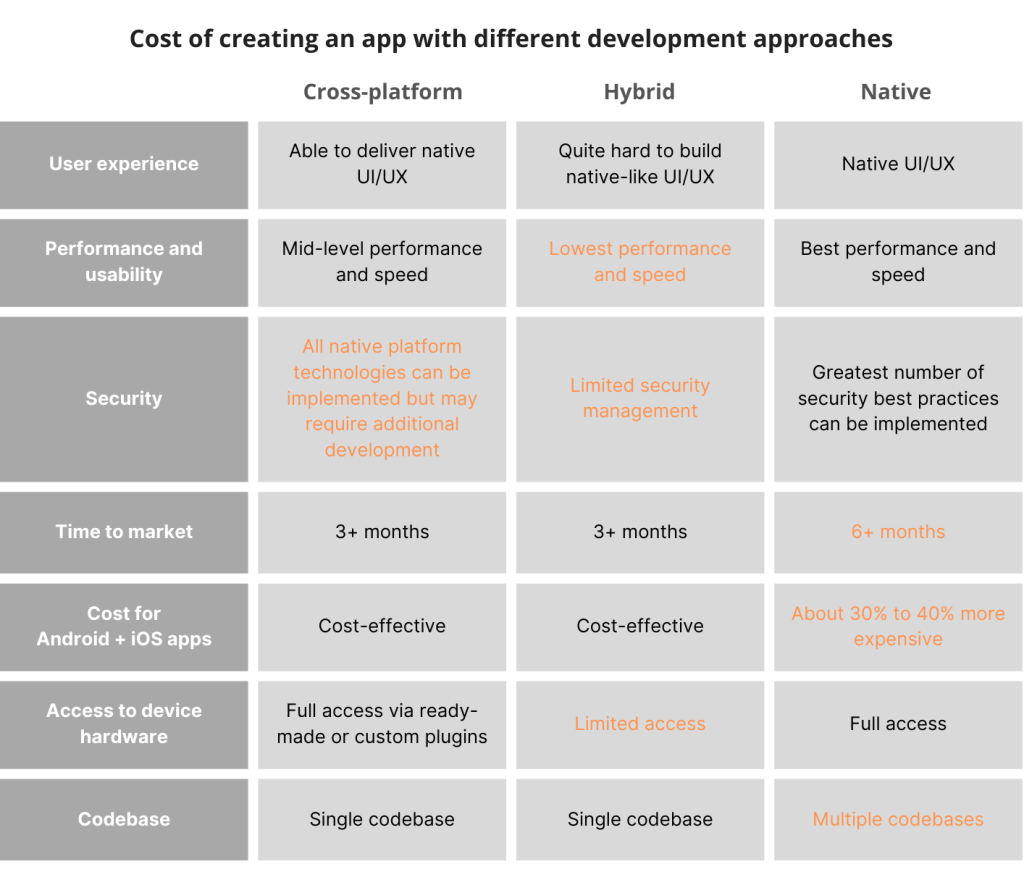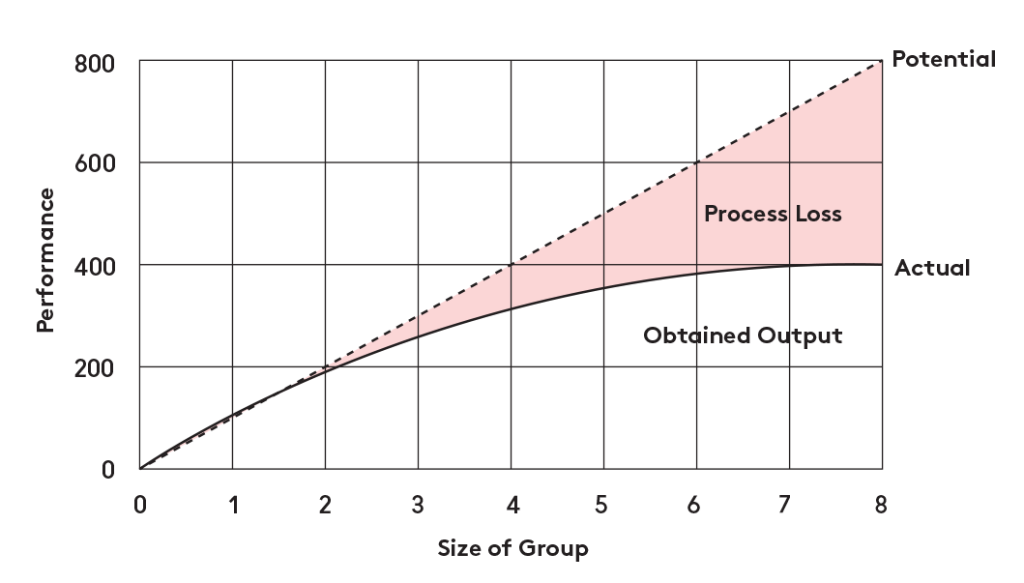According to CNBC, around 72.6% of internet users will only use smartphones to access the web by 2025. Right now, people spend about 90% of their mobile internet time on apps, using them for over four hours each day, compared to just 24 minutes on web browsers. On average, a person installs 46 to 47 mobile apps. A 2021 report from Sensor Tower highlights some changes in app usage in the United States:

These numbers show how much people love using smartphones, making mobile apps a crucial part of daily life for things like shopping and entertainment.
Mobile apps offer lots of benefits for businesses:
- Better Customer Experience - Customers can access services 24/7, no matter the time or place. Tools like AI and chatbots help businesses interact with customers in real time, boosting loyalty and sales.
- Business Mobility - Mobile apps let organizations connect with clients wherever and whenever, making work more efficient.
- Personalized Experiences - Apps collect customer data to offer personalized services and deals.
- Efficient Operations - Automating customer service and orders frees up staff to focus on important tasks and growing the business.
- Smart Marketing - Understanding user behavior helps businesses create personalized offers and effective ads.
- Building Brand Recognition - A mobile app becomes the face of a brand, making it recognizable and fostering loyalty.
- More Earnings and Competition - Being available 24/7 through an app boosts earnings, and having a unique app gives a business an edge in the market.
In summary, a well-made mobile app not only meets customer needs but also becomes a crucial tool for growing and succeeding in business.
Factors Influencing App Development Cost
When embarking on the journey of mobile app development, understanding the factors that influence costs is crucial. The estimates provided by potential contractors may vary significantly, and comprehending the elements shaping the price is key.
Here are the primary criteria:
Business Model
The selection of your business model plays a pivotal role in shaping the costs of development and ultimately determines the success of your venture. Tailoring your choice to your industry and service nature is crucial, as opting for the wrong model in a highly competitive market can pose a significant risk of failure.
Consider the scenario where you plan to introduce a new CRM system into a market already saturated with powerful alternatives. Customers entrenched in specific CRM systems for years are unlikely to switch to a brand-new product, even if it boasts exceptional features absent in their current system. In such cases, a prudent approach would be to pivot towards creating a complementary product that seamlessly integrates with existing CRM systems, effectively addressing functional gaps.
Check out a related article:
7 Proven Techniques to Monetize Your Free Mobile App
A highly effective strategy for startup launch involves identifying a narrow market niche not yet dominated by major industry players. Develop a solution that solves a critical customer problem within this niche, gain recognition, and subsequently expand the product's functionality. This iterative approach enables startups to gradually outperform and edge out competitors from the market.
In essence, the right business model aligns with industry dynamics, addresses customer needs, and positions your product for sustained success while managing development costs effectively.
Features and Complexity
The cost of developing a mobile app is heavily influenced by factors such as the number and variety of features, screens, buttons, and the complexity of the logic behind the frontend. These elements determine the time and effort needed for development, and as time increases, so does the overall cost.
Every project's budget estimate varies. To provide a sense of the potential costs, let's explore the feature sets of apps from well-known app categories:
Booking App like Airbnb:
- Log-in/sign-up, profile settings
- Catalog of listings and multi-option search filters
- Chat and push notifications
- Bookings and payments
- Wish list, maps, coupons
- Help center, ratings, and reviews
- Sharing via social media
Dating App like Tinder:
- Authorization, GPS integration
- User profiles, matching functionality
- Discovery settings, notifications
- In-app communication, push notifications
- Monetization (paid subscription plans, premium features, etc.)
Ridesharing App like Uber:
- User registration and authentication
- Real-time location tracking
- Ride booking and fare estimation
- In-app payments and receipts
- Ratings and reviews for drivers and riders
- Navigation integration
Social Networking App like Instagram:
- User profiles and content feed
- Photo and video uploads
- Filters and editing tools
- Likes, comments, and direct messaging
- Explore and discover functionality
- Stories and IGTV
Quite an impressive list, isn’t it? The cost of development will vary from project to project, but, in average, even an MVP of an app like those stated above will cost over 50-70K USD. The price can go higher if you use advanced features like high-end security or AI.
To achieve cost efficiency, it's essential to assess and prioritize the complete project scope. Opt for features that effectively deliver your product's core value to customers and generate revenue. Additional features can be incorporated later, allowing you to evaluate your product's viability in the market first.
Development Approach
The creation of a mobile app involves different development approaches, each with its unique characteristics and cost implications. The three main approaches are:
1. Native Development:
Involves building separate app versions for each platform (iOS, Android).
Offers rich functionality, stable performance, access to platform-specific features, security, and a polished UI/UX.
Despite being the most expensive, it is the ideal choice for fast and highly functional mobile applications.
2. Cross-Platform Development:
Utilizes special frameworks (e.g., React Native, Xamarin, Flutter) to create a single codebase.
The code is compiled and optimized for Android, iOS, and other mobile platforms, requiring some purely native code for cross-platform functionality.
Ideal for relatively simple apps, offering a 30% to 35% cost reduction compared to native development.
3. Hybrid Development:
Uses standard web technologies (HTML5/CSS and JavaScript) to create shared code.
The code is wrapped into native containers for all supported mobile platforms.
Suitable for less complex apps, providing cost savings compared to native development.

Choosing the right approach depends on your app's complexity and technical requirements. Consulting with an experienced technical expert is recommended for informed decision-making.
Check out a related article:
Native vs. Cross-platform – What App Will Work Best for Your Business?
Team Location
If you opt for remote developers, consider that the team's location significantly influences costs. For instance, a project outsourced to a team in Eastern Europe may cost half as much as the same project developed by a team in the USA with similar expertise. Here's a brief comparison of average hourly rates for mobile app development in different regions:

Team Size
Team size is a crucial factor influencing app development costs. The principle is straightforward: the more specialists required, the higher the overall expense. While it may seem logical to assume that doubling the number of developers results in halving the delivery time, the reality is more nuanced. A portion of project time is spent on team coordination and management, making the acceleration less than proportional. Hiring two specialists might accelerate delivery by 1.5 to 1.8 times.
Brook’s Law and Project Duration
Brook's Law highlights a non-linear relationship between the number of developers and project duration. Doubling the cost does not equate to doubling the scope. Understanding this is crucial, especially if facing tight deadlines.

Wish to learn what team size is perfect for you? Learn our article - How to Structure a Software Development Team
Time to Market
The urgency of project completion affects costs; faster delivery requires hiring more developers to meet deadlines. To mitigate risks, consider hiring experienced specialists, albeit at higher rates. Higher expertise translates to quicker delivery, but it comes with increased hourly costs. Adjusting the budget or reducing the scope may be necessary for a shorter deadline.
Team Expertise
The skillset and experience of your team impact project costs. Experienced developers deliver faster, albeit at higher hourly rates. Junior developers may take longer to comprehend tasks and implement solutions, potentially compromising quality. Proper quality assurance is crucial for junior coders to meet requirements. Conversely, experienced developers require less supervision, can work independently, and may charge higher rates.
In general, a balanced team mix, including junior and senior developers, is a win-win solution. Less expensive specialists handle routine tasks, while higher-ranked developers tackle complex aspects, optimizing the budget while ensuring quality deliverables.
Here's our guide on how to classify them - Junior or Senior: Hire a Software Developer Who Fits
8 Strategies for Cost-Effective App Development
1. Business Model Optimization:
Selecting the right business model is critical to avoiding unnecessary development costs. Analyze market competitiveness, identify unmet customer needs, and define your unique value proposition. Conduct a thorough product discovery phase to align project requirements with business goals, optimizing development scope, and ultimately reducing costs.
2. Features and Complexity Rationalization:
Optimize project costs by strategically managing features and complexity.
Consider developing a Minimum Viable Product (MVP) first, focusing on core customer needs.
Begin with a simple design to streamline development, reserving the option to enhance complexity post-launch.
Prioritize functionality based on market evolution, customer feedback, and data insights. We have a detailed guide in our blog on how to di this - Prioritize It: 11 Methods to Select Features for Your MVP
3. Time-to-Market Management:
Be cautious with aggressive deadlines and avoid hastening development by increasing the number of developers. Doubling the team may not double the delivery speed due to communication and coordination overheads.
Evaluate the impact on cost and schedule before deciding to accelerate development.
If time constraints are unavoidable, prioritize feature reduction and simplify infrastructure and UI/UX design to maintain financial feasibility.
4. Smart Platform Choice and Development Approach:
Choose between iOS and Android platforms strategically based on global market share and your target audience's behavior. Consider regional preferences and purchasing power, balancing Android's global dominance with iOS's market strength.
Consider cross-platform or hybrid development approaches to reduce costs. Consult technical experts to ensure these methods meet all technical requirements for desired functionality.
5. Team Location and Size Management:
Select remote contractors from regions with favorable development rates, ensuring convenience in communication and cultural fit. Optimize team size for productivity, with smaller teams often proving more efficient due to reduced communication and management overhead.
6. Team Expertise Optimization:
Mix developers with varying expertise levels to balance costs and maintain quality.
Senior developers handle complex strategic issues and architectural aspects.
Middle and junior developers focus on routine tasks under senior supervision, ensuring quality control and development pace.
7. Project Management and Quality Assurance:
Prioritize project management and quality assurance to accelerate development and ensure high-quality deliverables. Effective teams with streamlined communication spend less time on coordination, leading to cost savings.
8. Hiring Model Consideration:
Aim for software development outsourcing vendors specialized in your industry, despite potentially higher development rates. The overall project cost is often lower due to effective self-management and a commitment to delivering high-quality software on time.
Incorporating these strategies ensures cost-effectiveness without compromising the quality of the end product. Thorough planning, business model clarity, and strategic feature prioritization contribute to successful and budget-conscious app development.
If you need a more detailed consultation on mobile app development, you can always contact us – we are here to help.
Leave a Comment